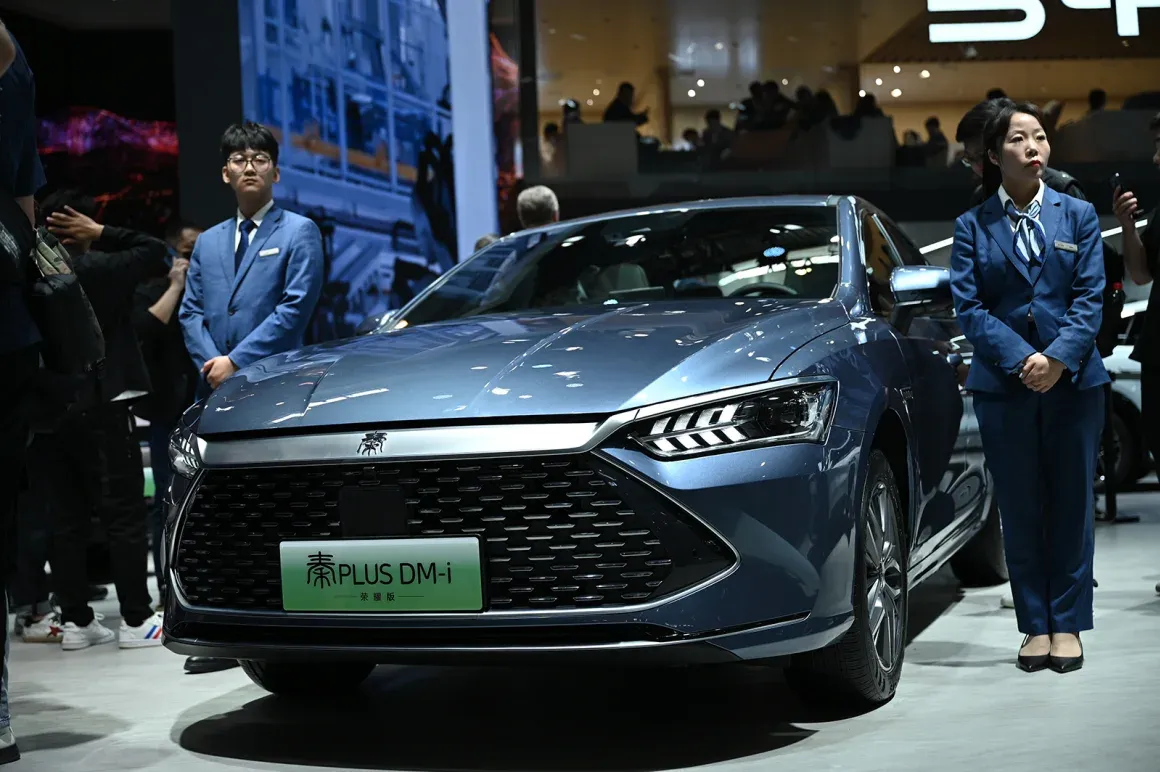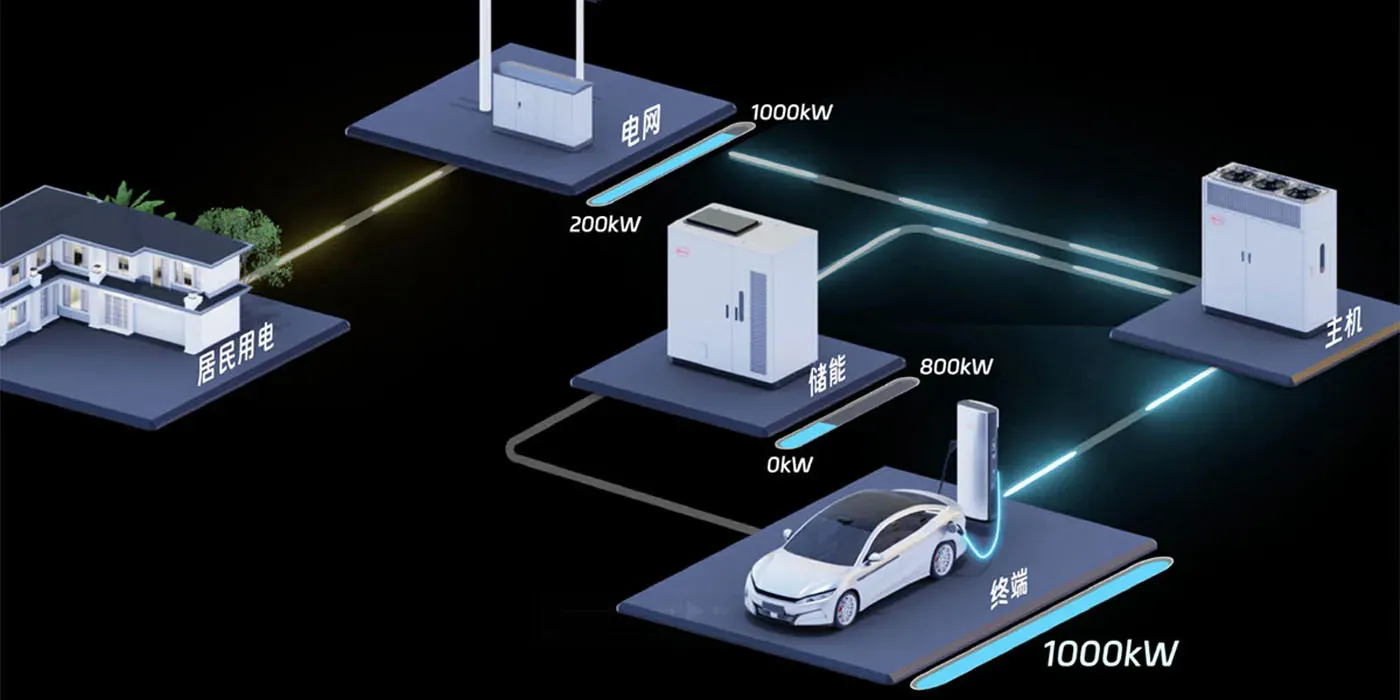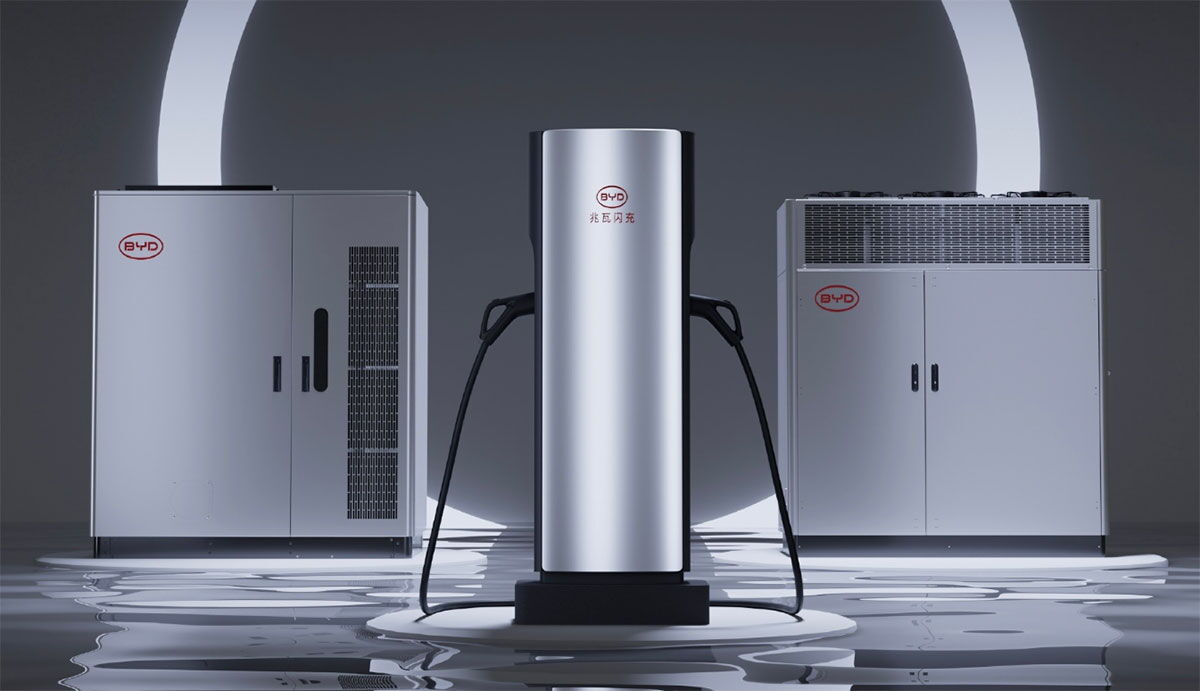Founded in 1995 by Wang Chuanfu in China’s megacity of Shenzhen, BYD is the country’s No 1 automaker. It exports its electric taxis, buses and other vehicles to markets across Europe, South America, Southeast Asia and the Middle East.
In China, BYD accounted for 32% of last year’s total sales of new energy vehicles, which include hybrids, far outpacing Tesla’s 6.1% market share, according to the China Passenger Car Association. (BYD makes both battery-powered cars as well as hybrids, while Tesla makes only fully electric vehicles powered by batteries.)

In a landmark announcement that could fundamentally reshape the electric vehicle landscape, Chinese automotive giant BYD has unveiled what industry experts are calling the most significant breakthrough in EV charging technology to date. The company's newly developed "Super e-Platform" enables astonishing charging speeds that add 400 kilometers (250 miles) of range in just five minutes - a feat that finally brings EV charging times on par with traditional gasoline refueling.
This revolutionary advancement positions BYD at the forefront of EV innovation, potentially solving one of the last remaining barriers to mass EV adoption: charging convenience. The technology represents such a dramatic improvement over current systems that it could render range anxiety obsolete and accelerate the global transition to electric mobility.
BYD's achievement stems from a holistic reimagining of EV architecture, combining multiple cutting-edge technologies into an integrated system:
The cornerstone of this breakthrough is BYD's proprietary 1,000 kW (1 megawatt) charging system, which delivers about four times the power of Tesla's fastest V4 Superchargers. This immense power capacity is made possible through:
All-liquid-cooled charging terminals that maintain optimal temperatures even at extreme power levels
Advanced power management systems that dynamically adjust voltage and current flow
Next-generation connector technology capable of handling unprecedented energy throughput
BYD's new ultra-fast ion channel battery represents a fundamental redesign of lithium-ion cell architecture:
50% reduction in internal resistance through optimized ion pathways
Novel electrode materials enabling faster ion movement
Enhanced thermal management preventing degradation during rapid charging
Patented cell configuration that maintains stability at high charging rates
The company has developed proprietary 1,500V silicon carbide (SiC) power chips that set new industry standards for:
Energy efficiency (reducing power loss by up to 70% compared to conventional silicon chips)
Thermal performance (operating reliably at higher temperatures)
Power density (enabling more compact, lightweight power systems)
Complementing these advancements is BYD's new 30,000 RPM electric motor, which provides:
Unprecedented power density (more torque in a smaller package)
Enhanced efficiency through reduced electromagnetic losses
Improved thermal characteristics for sustained high-performance operation

BYD's breakthrough arrives at a pivotal moment in the global transition to electric mobility. The implications for consumers, automakers, and energy infrastructure are profound:
For Consumers:
Elimination of range anxiety with gas-station comparable charging times
Increased vehicle utilization for ride-sharing and commercial fleets
Potential reduction in battery size requirements, lowering vehicle costs
For Automakers:
New performance benchmarks that competitors must match
Pressure to accelerate development of ultra-fast charging systems
Opportunities for new vehicle designs optimized for rapid charging
For Energy Providers:
Demand for high-power charging infrastructure at strategic locations
Grid modernization requirements to support megawatt-level loads
Integration opportunities with renewable energy and storage systems

To appreciate the magnitude of BYD's achievement, consider how it stacks up against current industry standards:
|
Parameter |
BYD New System |
Tesla V4 Supercharger |
Porsche 800V System |
Typical Fast Charger |
|
Max Power |
1,000 kW |
350 kW |
270 kW |
50-150 kW |
|
Range Added (5 min) |
400 km |
120 km |
100 km |
30-50 km |
|
Voltage Rating |
1,500V |
1,000V |
800V |
400V |
|
Battery Tech |
Ultra-Fast Ion |
4680 Cells |
Premium Lithium |
Standard Lithium |
|
Motor Speed |
30,000 RPM |
~18,000 RPM |
~16,000 RPM |
Varies |
This comparison reveals that BYD's system isn't merely an incremental improvement, but rather represents a generational leap in charging technology.
While the technology promises to revolutionize EV charging, several hurdles remain before widespread adoption:
Megawatt-level charging demands unprecedented power delivery:
Solution: BYD is developing smart charging systems that coordinate with grid operators to balance loads
Future-proofing: Stations will incorporate battery buffers and solar canopies to reduce grid impact
Ultra-fast charging traditionally accelerates battery degradation:
Solution: BYD's advanced thermal management and optimized chemistry specifically address this issue
Validation: Early testing shows less than 10% capacity loss after 2,000 ultra-fast charge cycles
High-power infrastructure requires significant investment:
Solution: BYD's vertical integration (producing batteries, chips, and chargers) helps control costs
Economics: Reduced charging time increases station throughput, improving ROI
This technological breakthrough strengthens BYD's position in multiple ways:
Competitive Differentiation: Establishes BYD as the innovation leader in EV technology
Supply Chain Control: Vertical integration gives BYD cost and quality advantages
Global Expansion: Creates new opportunities in markets where charging speed is a barrier
B2B Opportunities: Positions BYD as a charging infrastructure provider to other automakers
BYD has outlined an ambitious rollout plan:
2024: Limited pilot program with fleet operators in China
2025: Commercial launch in key Chinese markets
2026: Expansion to Europe and select global markets
2027+: Potential licensing to other manufacturers
Future iterations promise even greater advancements, with research underway on:
1,200 kW charging systems
Solid-state battery integration
Vehicle-to-grid (V2G) compatibility
BYD's five-minute charging technology represents more than just a technical achievement—it signals a fundamental shift in what consumers can expect from electric vehicles. By effectively eliminating the charging time disadvantage compared to gasoline vehicles, this breakthrough removes one of the last psychological barriers to mass EV adoption.
As the technology matures and scales, it could accelerate the global transition to electric mobility by several years, forcing competitors to accelerate their own development timelines. The implications extend beyond passenger vehicles, potentially revolutionizing electric buses, trucks, and even marine and aviation applications.
While challenges remain in implementation, BYD has demonstrated that ultra-fast charging is not just theoretically possible, but commercially viable. The era of waiting hours to charge an EV may soon be remembered as a brief, transitional phase in the evolution of electric transportation.
As industry analyst Zhang Wei of Bernstein Research notes: "This isn't just another incremental improvement—it's the kind of paradigm-shifting innovation that redefines entire industries. BYD hasn't just raised the bar; they've moved it to an entirely new playing field."
The race for EV supremacy continues, but with this announcement, BYD has fired what may be remembered as the most significant shot yet.
